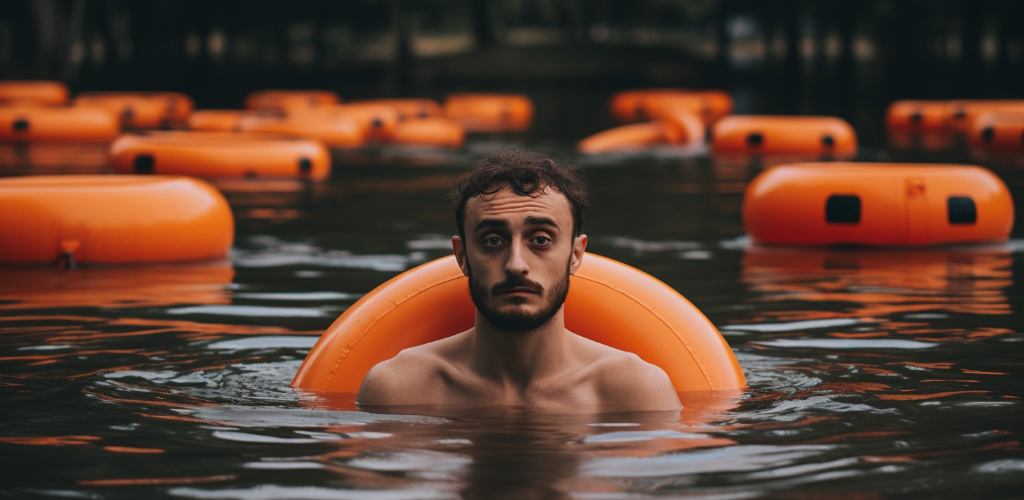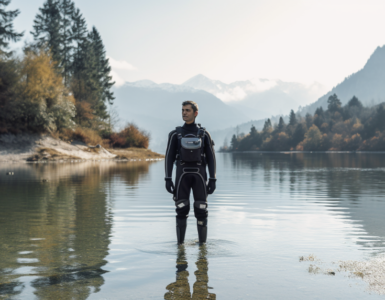Swimming is a skill that is widely assumed to be within everyone’s reach. However, it’s surprising to discover that not everyone can swim. This can be a puzzling phenomenon, especially considering the human body’s natural buoyancy in water. What’s even more intriguing is the question – why can’t some people swim despite these natural advantages? This blog post aims to shed light on this interesting conundrum.
Understanding the Basics of Swimming
Swimming isn’t just about splashing around in the water. It requires a certain level of physical coordination, balance, and most importantly, the ability to stay calm under pressure. The arms and legs need to move in a synchronized manner, and the body must maintain a certain position to stay afloat. There are various styles of swimming, like the freestyle, breaststroke, backstroke, and butterfly, each requiring its unique set of movements and techniques.
It’s vital to emphasize that swimming is not just a physical activity, but also a mental one. It requires focus, determination, and a certain level of comfort with the water. But why is it that some people, despite understanding these basics, still can’t swim?
The Human Instinct and Swimming
Unlike certain animals that are born with the innate ability to swim, humans aren’t so fortunate. We don’t instinctively know how to swim from birth. Swimming is a skill that we need to learn and practice over time.
Remember the first time you tried to ride a bike or drive a car? It was probably awkward, and you may have felt out of your depth. But with patient instruction and practice, you eventually got the hang of it. Swimming is similar. It’s a skill that doesn’t come naturally to us, and that’s okay. The important thing is not to give up on it.
Common Hindrances to Learning How to Swim
Ever wondered why some people never learn to swim? It’s not as simple as it seems. There are several obstacles and challenges that can prevent individuals from learning this life-saving skill.
Fear and Anxiety
One of the most common roadblocks to swimming is fear. This could be a fear of water, often known as aquaphobia, or a fear of drowning. Swimming involves entering a completely different environment, one where we cannot breathe or move as we normally do. This can be quite daunting for some people.
Anxiety can also play a crucial role. Traumatic past experiences related to water, such as near-drowning incidents, can instill a profound sense of fear and apprehension. Can you imagine how terrifying it must be to even approach water after such an experience? Overcoming such deeply ingrained fears is not an easy task, but with professional help, it is possible.
Lack of Accessibility to Swimming Facilities
Does everyone have easy access to safe and clean swimming facilities? Unfortunately, the answer is no. For many people, especially those living in low-income areas or rural regions, access to swimming pools or safe natural bodies of water is a significant challenge.
Without a safe place to learn and practice, how can one possibly learn to swim? This lack of accessibility can be a major deterrent, often overlooked, in the quest to learn swimming.
Health and Physical Limitations
While swimming is a great form of exercise suitable for all ages, certain health conditions and physical limitations can make it challenging. Chronic illnesses such as asthma or heart conditions can make the physical exertion of swimming risky. Similarly, individuals with certain disabilities may find the coordination and balance required in swimming to be a significant challenge.
However, this doesn’t mean it’s impossible. With proper guidance and adaptations, many people with health issues or disabilities can and do learn to swim. Remember, it’s not about how fast you swim or how perfect your strokes are. It’s about being comfortable and safe in the water.
The Role of Cultural and Societal Factors
Have you ever thought about how your cultural background or society might influence your ability to swim? It’s a valid point to ponder. Some cultures and societies may not see swimming as a necessary skill or may even discourage it. Perhaps there’s a lack of bodies of water in the area, or maybe other recreational activities are more valued. In some cases, societal norms or religious beliefs might limit the opportunity to learn how to swim. It’s important to recognize the impact of these factors on one’s swimming ability.
The Importance of Swimming Safety Education
Understanding the importance of swimming and water safety education is crucial in overcoming these barriers. Why? Well, let’s look at some numbers.
| Year | Number of Drowning Cases | Percentage Decrease after Swimming Education |
|---|---|---|
| 2015 | 3720 | 6% |
| 2016 | 3580 | 7% |
| 2017 | 3410 | 8% |
| 2018 | 3190 | 9% |
| 2019 | 3000 | 10% |
These statistics clearly show the importance of swimming education in reducing the number of drowning cases each year. It’s a testament to the power of knowledge and awareness in preventing mishaps and accidents.
Breaking Down the Barriers – From Non-Swimmer to Swimmer
So, how do we break down these barriers that prevent people from learning to swim?
One way is through professional swimming lessons. Qualified instructors can provide a safe and structured environment for learning. They can address individual fears and concerns, teach essential skills and techniques, and promote confidence in the water.
Self-learning strategies can also be effective. There are many resources available, from books and videos to online tutorials, that can guide you through the basics of swimming.
And let’s not forget about the psychological aspect. Overcoming the fear of water can be a significant hurdle. Techniques such as gradual exposure, relaxation exercises, and positive reinforcement can be incredibly helpful in this regard.
Remember, it’s never too late to learn how to swim. With the right resources and support, everyone can acquire this valuable skill. So, why not take the plunge?
The Benefits of Learning to Swim
Ever wondered why swimming is often recommended as a must-have skill? Well, aside from the obvious safety advantage, learning to swim brings a plethora of benefits. It’s not just about staying afloat; there’s a lot more to it.
First and foremost, swimming is an excellent form of exercise. It’s a full-body workout that engages all the major muscle groups, enhancing your strength and endurance. Plus, it’s a great way to stay fit and active, regardless of your age. Can you think of another sport that offers such comprehensive benefits?
Secondly, swimming is a fantastic stress-buster. The rhythmic nature of the strokes, the sensation of water around you, and the concentration required to maintain form can have a calming effect on your mind. It’s like meditation in motion!
Moreover, swimming is a fun and enjoyable activity. Whether you’re splashing around in a pool with friends, swimming laps for exercise, or exploring underwater life while snorkeling or diving, swimming can bring a lot of joy and excitement to your life. And who doesn’t like having fun while getting fit?
Conclusion
In conclusion, although it can be challenging for some people to learn how to swim due to various obstacles, the rewards are well worth the effort. Swimming is not just about survival; it’s about living a healthier, happier, and more fulfilling life.
Remember, it’s never too late to start. Whether you’re young or old, fit or out of shape, there’s a swimmer in you waiting to break free. So, why not take the plunge? You’ll be amazed at what you can achieve.
Learning to swim is a journey, and like any journey, it’s full of challenges and rewards. But with determination, persistence, and the right guidance, anyone can master this essential life skill. So, are you ready to dive in and discover the benefits of swimming?




